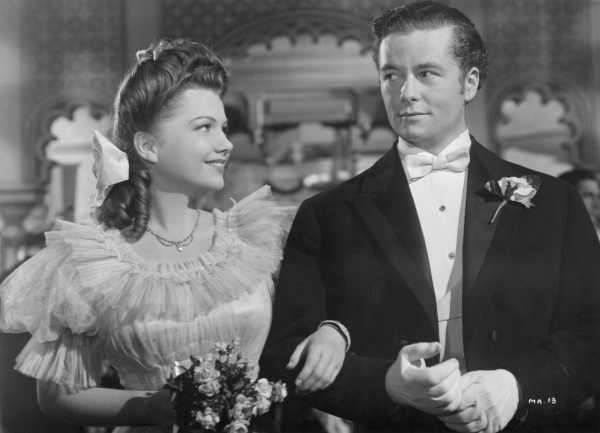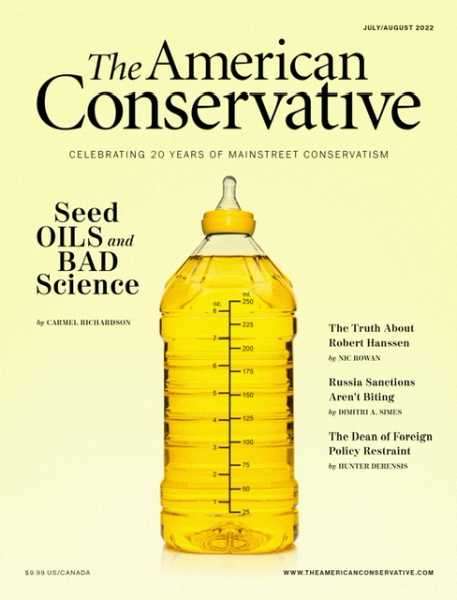
Eighty years ago, in March 1942, Orson Welles was two months away from turning 27. To that point in his already remarkable life, he had known little but applause.
Born in 1915 in Kenosha, Wisconsin, Welles was judged a genius from an early age. “I was spoiled in a very strange way as a child because everybody told me from the moment I was able to hear that I was absolutely marvelous,” he said in a 1982 interview with the BBC. As his career as America’s most talented writer-director-actor got under way, he did his best to confirm their predictions.
Advertisement
First Welles oversaw a pair of dazzlingly fresh adaptations of Shakespeare for the Federal Theatre Project and then for his own Mercury Theatre—his Macbeth in 1936 featured an all-black cast, and his Caesar in 1937 contained provocative allusions to Nazism and fascism. Then, for Mercury Theatre on the Air, he put on a radio version of H.G. Wells’s The War of the Worlds that was so persuasive that some listeners were left thinking the Martians had really arrived. In 1941 came Citizen Kane, which Welles co-wrote, directed, and starred in. While not admired as widely in its day as it is in ours, it was nonetheless regarded in sophisticated quarters as a major advance in film art.
“I never heard a discouraging word for years,” Welles said to the BBC. “I didn’t know what was ahead of me!”
In fact, Welles’s downfall was right around the corner. During that fateful spring of 1942, Welles’s second film, The Magnificent Ambersons—his brilliant, funereal, unflinching adaptation of Booth Tarkington’s Pulitzer Prize-winning 1918 novel about an aristocratic Midwestern family whose downfall is told in parallel with the rise of the “horseless carriage”—was tried out with preview audiences. The response constituted the first “discouraging words” Welles would hear in his life.
At the first preview, held on March 17 in Pomona, California, the response was mixed, with 53 positive audience reactions versus 72 negative ones, according to figures from Peter Bogdanovich’s collection of interviews with Welles in the posthumously published This Is Orson Welles. “Too many wierd [sic] camera shots,” read one of the negative cards. “It should be shelved as it is a crime to take people’s hard-earned money for such artistic trash as Mr. Welles would have us think . . . Mr. Welles had better go back to radio, I hope.”
That was enough to alarm officials at RKO Radio Pictures. Using the negative reactions at the Pomona preview as a pretext, RKO officials deemed the film in need of severe cuts and substantial reshoots, both of which were executed without Welles’s hands-on participation (he was then at work on a never-to-be-finished nonfiction film in Brazil). At Pomona, the film had a running time of about two hours, but the release version that was settled on following subsequent previews, which is the only one in circulation today, unfolds over the course of a mere 88 minutes.
Advertisement
“When we took it out for previews, it played well in some spots and in other spots it just was very bad. It had bad laughs in it,” the film’s editor, Robert Wise, told me when I interviewed him in 2004 for my book Orson Welles Remembered. Yet the question remains: Why did those who disliked The Magnificent Ambersons dislike it so emphatically? Perhaps the preview audiences couldn’t fully articulate their distaste—hence the defensive references to Welles’s “weird” visual style or “artistic” pretensions—but we can make some guesses.
Much is made of the elegiac tone of The Magnificent Ambersons—its evocation of the way Midwesterners once lived, dressed, and played—but one would expect this sort of wistful nostalgia to have played well with moviegoers who, just a few years later, made a hit out of Vincente Minnelli’s equally plaintive Meet Me in St. Louis. Welles was not above getting sentimental about the Midwest of his youth, as when, in a plangent autobiographical essay in Paris Vogue in the early 1980s, he described boyhood visits to Dixon, Illinois, the hometown of Ronald Reagan.
“I believe it was in Dixon that our President formed his image of that peculiarly innocent America to which he would like us all to return,” Welles wrote. “Dixon had the kind of main street we used to see in a Hollywood studio, with hitching posts, barber poles and a wooden Indian in the front of the cigar store.”
At first glance, The Magnificent Ambersons seems to spring from the same nostalgic impulse. In the famous opening sequence, we see a shot of a horse-driven streetcar—“The only public conveyance,” Welles notes in his slumberous narration—halting in front of the Ambersons’ snow-capped mansion, followed by shots of star Joseph Cotten posing in the passing dress styles. “In those days, they had time for everything,” Welles continues. “Time for sleigh rides and balls and assemblies and cotillions and open house on New Year’s and all-day picnics in the woods, and even that prettiest of all vanished customs: the serenade . . .”
Yet as quickly as Welles establishes this folksy tone, he complicates it. In his narration, Welles makes clear that the Ambersons stand at a remove from this Norman Rockwell-style utopia. “Against so homespun a background, the magnificence of the Ambersons was as conspicuous as a brass band at a funeral,” Welles says, setting up a vignette of ordinary townspeople sharing scuttlebutt about the family’s conspicuous affluence: “Sixty thousand dollars for the woodwork alone,” one man says of the mansion, “Hot and cold running water,” a woman interjects, “Upstairs and down,” another adds.
Townspeople are said to wish for the “comeuppance” of George Amberson Minafer (played as a child by Bobby Cooper and as an adult by Tim Holt), the undisciplined, unapologetically snobbish son of Isabel Amberson Minafer (Dolores Costello) and her milksop husband, Wilbur Minafer (Don Dillaway). Young George makes no excuses for cussing out a local man after a brawl with another boy. “I bet if he wanted to see any of us, he’d have to go around to the side door,” George says, prompting affectionate laughter from his grandfather, the family patriarch, Major Amberson (Richard Bennett). Fully grown, George is no less patronizing towards automobile inventor Eugene Morgan (Cotten), about whose invention he offers nothing but open contempt: “Automobiles are a useless nuisance,” George says.
What we have, then, is not simply an affectionate portrait of days gone by—a project that most moviegoers in the 1940s would have gotten behind—but a study of class differences and social upheaval: The town in the film goes from being dominated by bluebloods like the Ambersons to being run by a class of inventors, entrepreneurs, and businessmen exemplified by Eugene.
What is most likely to have induced discomfort in the preview audience 80 years ago is that Welles comes down on the side of the Ambersons, whose moneyed idleness is seen to carry fewer social costs than the striving industriousness of Eugene. This is a film about automobiles made without any of the glamor or excitement of the classic car films of the 1960s and ’70s and instead portrays them as dirty, ugly, and noisy, lumbering contraptions that pollute the air and crowd the road.
Welles certainly has fun at the expense of the Ambersons, as when George scoffs at prospective professions—“Lawyers, bankers, politicians, what do they ever get out of life, I’d like to know”—and insists that his goal, to the extent he has one at all, is to become a yachtsman. But watch how tenderly and gracefully he captures their way of life: The camera floats into the Ambersons’ front doors during a ball thrown at Christmastime, and there’s an incomparable bit of cinematic magic when George and Lucy, Eugene’s grown daughter (Anne Baxter), ride a sleigh through a snowy lane, past Eugene’s momentarily stalled automobile, to the sound of the sleigh bells.
By contrast, Welles shows the outwardly affable Eugene to be a vessel for horrors, a convivial, courtly man whose creation is nonetheless certain to “change the face of the land,” as Major Amberson puts it, and not for the better. “It may be that they won’t add to the beauty of the world or the life of men’s souls,” Eugene concedes. “But automobiles have come, and almost all outward things are going to be different because of what they bring. They’re going to alter war and they’re going to alter peace.”
And so they do. “Changed, so changed,” Isabel says of her town late in the film, presaging a long sequence in which Welles starkly depicts the sprawl and industrialization of what had been a quaint burgh. “The town was growing, changing,” Welles says over shots of telephone poles, electrical wires, rising buildings, and cheap apartments. “It was heaving up in the middle incredibly, it was spreading incredibly.” Undoubtedly this aspect of the film was expressed with more drama and depth in the full version seen by that first preview audience. In the release version, the film gets too bogged down in the Ambersons’ interpersonal dramas and loses sight of the central metaphor of the family’s slide and the automobile’s rise.
Subscribe Today Get weekly emails in your inbox Email Address:
On that night in Pomona, Welles’s message surely came through loud and clear: Modernity comes at a price. This was, and is, a provocative sentiment. Although a strong liberal Democrat, Welles was in many ways strikingly anti-modern. Describing his affinity for Shakespeare, from whose works he made three masterly films, Welles told the BBC, “I am against my modern age, he was against his.”
He was so dubious about technological advances that he even came down against the moon landing, as he explained in a never-finished documentary about the making of his film of Franz Kafka’s The Trial: “I’m awfully serious about the moon. I think that Robert Graves was right when he said that the most blasphemous thing that has happened since Alexander cut the Gordian knot was when we landed on the moon.”
Who but an artist as daring as Welles would question the wisdom of democracy, the moon landing, and the “horseless carriage”? Audiences in rah-rah World War II America did not know how to process a film that took such issue with material progress and the fruits of capitalism, let alone one that commended the steadying hand of a ruling class. Today, however, we may finally be ready to share in Welles’s admiration for the magnificence of the Ambersons.

This article appears in the July/August 2022 issue
Subscribe Now Advertisement
Sourse: theamericanconservative.com






